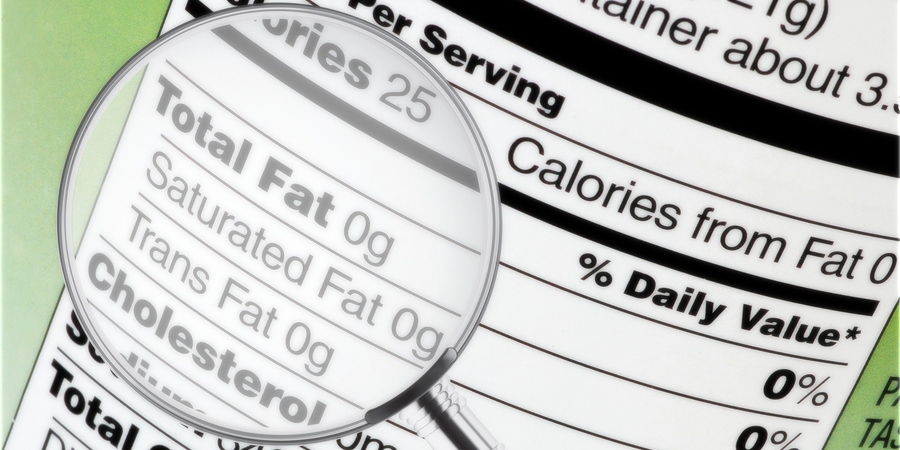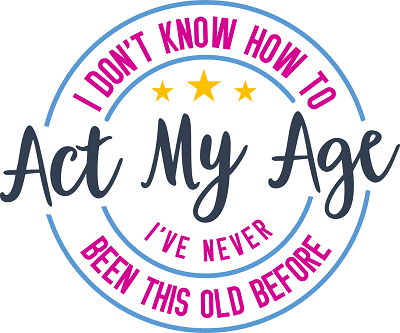
One of the most important things you can do for your own nutrition is to know what you’re eating. In recent years, food labels have become much more user friendly and you really can know exactly what you’re putting in your body.
Your relationship with food is very important. What you eat can help to give you energy, improve your immunity, and allow you to combat many diseases. But it can also do the opposite – leave you feeling weak and even cause disease.
But if you’ve never given your food much thought, reading food labels can be intimidating. There’s a lot of information there. Deciding which information is important and which isn’t can be challenging. Once you know the basics, though, you’ll read those labels with confidence.
Be Smart about Serving Size
Begin with looking at the serving size on the label. Sometimes people miss this part of the label and then have an inaccurate idea of what’s actually in the food. For example, if you have a can of soup and the label says it’s 2 servings, that means that the information on the label would be doubled if you ate the whole can.
Labels have gotten better in the recent past. For example, a can of soda used to be 1.5 or 2 servings. But now when you look at the label, one can of soda is a whole serving because most people will drink the entire thing. A 20 oz bottle, though, is more than 2 servings.
Calorie Breakdown
Once you know the serving size, you’re ready to move on to looking at the quality of the food you’re eating. The most obvious information you can get from your food label is about the breakdown of calories.
The label will tell you how many calories are in each serving. Calories are the measurement for how much energy it takes down to break down the food. The higher the calories, the longer it will take to break it down.
Your metabolism is the measure of how much energy you burn over a period of time. While we often think of exercising as burning calories, the effect of exercise is small compared to the total calories you burn.
When your heart beats, you breathe in and out, your body breaks down nutrients and makes new blood cells you’re burning calories. That’s why you need an average of around 2,000 calories in a day.
There are three basic biomolecules that your food can give you: proteins, carbohydrates, and fats. Food labels tell you exactly how much of each you’re getting in a serving of food. The label also tells you how many grams of that food you need in a typical diet.
Depending on the label, the following are the major categories you’ll find:
- Total calories per serving
- Grams of carbohydrates
- Grams of fat
- Milligrams of sodium
- Grams of protein
- Vitamins and minerals, if any
Within those major categories are some subdivisions to help you understand even more about what you’re eating. Let’s take a look at those subdivisions and what they mean for you when it comes to your diet.
Not All Carbohydrates are Created Equal
When it comes to carbohydrates, some are better for you than others. Let’s be clear – you need carbohydrates to have energy and to be healthy. Any diet that tells you to eliminate them completely is unhealthy.
A food label will break down carbohydrates into two categories – fiber and sugars. You need both. However, many people don’t have enough fiber in their diets. You want to look for foods that are high in this nutrient.
Fiber helps you to lower your cholesterol and helps your digestive system to be more regular. You’ll find more fiber in foods that contain whole grains such as wheat and oats. This is the healthier type of carbohydrate.
The other category of sugars is what you need to watch if you’re concerned about diabetes. Depending on your situation with blood sugar, you’ll want to limit how many grams of sugar you get in your diet.
When it comes to calories, every gram of carbohydrates contains 4 calories. So if you want to know how many calories in the food come from carbohydrates you can multiply your carbohydrate grams by four. Then you can look at the total calories in the serving to determine the percentage of calories that come from them.
The Purpose of Protein
Your body must have protein to build structures. Most of the structures inside you consist of protein and in order to have the building blocks to repair cells and develop muscles, you’ll need to eat food that has this important molecule.
A food label will tell you the number of grams of protein in your food. You’ll want to look for foods that are high in protein. Foods that have a lot of protein include nuts, meats, whole grain foods, and dairy products.
The Facts about Fats
Food labels will also give you information about fats. In the past, health practitioners told patients to avoid fat altogether. But it turns out that modern science doesn’t support that type of diet. You actually need fats just like you need other molecules in your food.
The two major categories of fats are unsaturated and saturated. Unsaturated fats come from plant sources. At room temperature unsaturated fats stay liquid. These are considered healthy fats. You need them to help keep your skin and other organs healthy.
Unsaturated fats also help lower “bad” cholesterol and raise “good” cholesterol in your blood. This helps to protect your heart and prevent problems such as heart disease and stroke. They also help your digestive system to run smoothly.
Saturated fats come from animal fats. These are solid at room temperature and are considered unhealthy fats. They contribute to high cholesterol, clogged arteries and can ultimately lead to heart disease, stroke, and other disorders.
Speaking of cholesterol, you can also find the amount of cholesterol in a serving of food on the label. Cholesterol amounts become important when you’re trying to eat a heart healthy diet. If you’re trying to lower cholesterol, you’ll want to pay attention to this part of the label.
Trans fats are a category of fats that come from altering the chemical structure of an unsaturated fat. They are also called hydrogenated fats because the process of taking a liquid unsaturated fat to a solid trans fat involves adding hydrogen atoms to the molecules.
For many years it was thought that trans fats were as healthy as unsaturated fats, but that has been disproved. In fact, trans fats are actually more harmful than saturated fats. Because of the bad press trans fats many food manufacturers are removing it from their products.
The United States Food and Drug Administration (FDA) now requires that trans fats are listed on food labels. It’s a good idea to avoid any food that has trans fats in it. These fats have no nutritional value and are in fact harmful for you.
Sodium Safety
Another nutrient that food labels provide information about is sodium. Sodium is the fancy, scientific term for salt. If you have normal blood pressure you probably don’t pay too much attention to salt. But if you’re suffering from high blood pressure, you can’t ignore it.
Sodium causes your body to hold onto water and in turn raises your blood pressure. High blood pressure is a leading risk factor for heart disease and stroke. So if you have this issue, you need to check the labels. Speak with your doctor about what healthy amount of sodium is for you.
Then you’ll want to look for labels that have low amounts of sodium or are even free from it. Some foods are labeled as “low sodium” but you still need to look at the label and see where it fits in with your needs.
Eating Vitamins and Minerals
While most people could use a multivitamin each day, the best way to get your vitamins and minerals is through the food you eat. In food, you find these vitamins and minerals in a natural state that’s easy for your body to absorb.
Food labels will give you an idea of what nutrients can be found in a specific food. Look for foods that are high in vitamins and minerals such as calcium, vitamin C, vitamin A, potassium, and beta-carotene.
Making Time for Reading Food Labels
When you’re new at reading food labels, it can see overwhelming. But the more you do it, the easier it becomes. You’ll also have your “go-to” foods that you can just pick up without revisiting the label every time.
Plan to spend some extra time at the grocery store when you’re paying more attention to food labels. Pay attention to what nutrients you’re looking to limit and what you need to add to your diet. Before you shop, make a list of what you need to get.
Then, as you’re shopping make a list of additional foods that you’d like to incorporate into your diet. You may also want to make a list of foods you’d like to avoid. Perhaps something you’ve always loved has way more cholesterol than you can afford. Spend some time looking for a substitute that’s on the healthier side.
Understanding Ingredients
The other list you’ll find on a nutrition label – or near it – is a list of ingredients. Ingredients on products are listed in order from greatest amount to least amount in the food. This list of ingredients can be very helpful for determining if a food is something you want to eat or not.
Some ingredients you might want to avoid include:
- Corn syrup (highly processed sugar)
- Hydrogenated oils
- Monosodium glutamate (MSG)
- Artificial coloring
- Artificial sweeteners (sucralose, aspartame, saccharin)
Ingredients that are not natural and come from chemical processing are generally not good for your body. A rule of thumb to follow is that if you can’t pronounce the ingredient, you probably shouldn’t eat it.
Once you start reading food labels, you’ll be surprised to find out how many additives are in processed foods. While some foods with labels are healthy for you, there are a lot of foods that come in cans, boxes, and bags contain harmful ingredients.
Foods without Labels
When it comes to nutrition, the best thing you can do is look for foods that don’t require labels. These are foods such as fruits, vegetables, and meats. The less processed your food is, the healthier it will be.
Other foods have labels, but are also close to their natural state. This includes food such as:
- Milk
- Yogurt
- Whole grain bread
- Whole grain cereals
- Natural peanut butter
- Natural cheese
When you’re shopping, using food labels can help you to make good choices. Look for foods that are high in nutrition and low on saturated fats, artificial chemicals, cholesterol, and processed sugars. This will help you to prevent disease, have more energy, and even help you to shrink your waistline.


